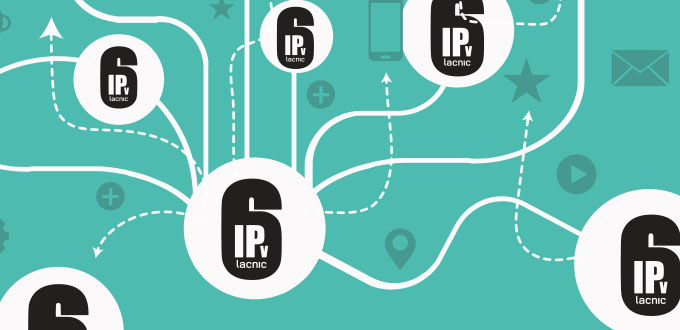Governments of the Region Help Promote IPv6 Deployment
20/12/2017

Governments of the region have become aware of the need to accelerate IPv6 deployment to keep up with Internet growth and development. Thus, government agencies have joined the efforts already implemented by various organizations and develop public policies to clear the road towards the latest version of the Internet protocol.
This year, Peru and Colombia were at the forefront, passing resolutions for government agencies to adopt IPv6 in their technological infrastructure, as this will allow them to further develop the Internet and implement state-of-the-art networks. In addition, both governments are encouraging private organizations to follow along the same path.
“Governments are becoming increasingly aware of the importance of promoting IPv6 and are developing instruments and tools such as decrees and resolutions,” said César Díaz, Head of Strategic Relations and Telecommunications at LACNIC.
In the case of Peru, the President made the decision to order a plan for transitioning to IPv6, including an implementation strategy and deadlines that must be met by the country’s public agencies (http://www.pcm.gob.pe/wp-content/uploads/2017/08/DS_N_081-2017-PCM.pdf )
Likewise, the Colombian Ministry of Information Technology issued a resolution for public and private organizations in the country to adopt IPv6 in their networks http://www.mintic.gov.co/portal/604/articles-61192_recurso_1.pdf.
These measures address issues such as the efficiency of public networks, procurement of IPv6-ready equipment, and e-government. In addition, as Kevon Swift of LACNIC noted, “these resolutions aim to identify and try to anticipate issues related to market dynamics.”
Swift also highlights a change in the perception of IPv6 on the part of both governments and private organizations. “While today IPv6 is seen as a strategic decision, it was previously perceived as a very technical issue which struggled against financial decisions. Governments and organizations now know that without IPv6 Internet development is limited,” added LACNIC’s Head of Strategic Relations and Integration.
Following intense efforts to promote the IPv6 protocol, this year LACNIC assigned 1,462 IPv6 blocks. In addition to face-to-face training activities and the online courses offered through the LACNIC Campus, LACNIC organized high-level visits in Colombia, Guyana, Suriname, and most recently in the Bahamas, where the organization participated in a seminar with ministers responsible for ICTs in the Caribbean.
IPv6 Is Making Progress. The latest indicators show that resource allocation and LACNIC training activities have proven to be effective, as evidenced in the significant growth of IPv6 traffic.
According to the latest available statistics, at least 10 countries already have more than 5.0% IPv6 traffic (Guatemala, Uruguay, Trinidad and Tobago, Brazil, Ecuador, Peru, and Mexico), while others have more than 4.5% (Argentina, Bolivia).
Another fact worth noting is that, according to Google statistics, five countries in the LACNIC region are among the top 20 countries with the highest IPv6 traffic worldwide.
According to available data, the LACNIC region has the highest number of clients with IPv6 addresses (90.37%). https://www.nro.net/wp-content/uploads/NRO_Q3_2017.pdf